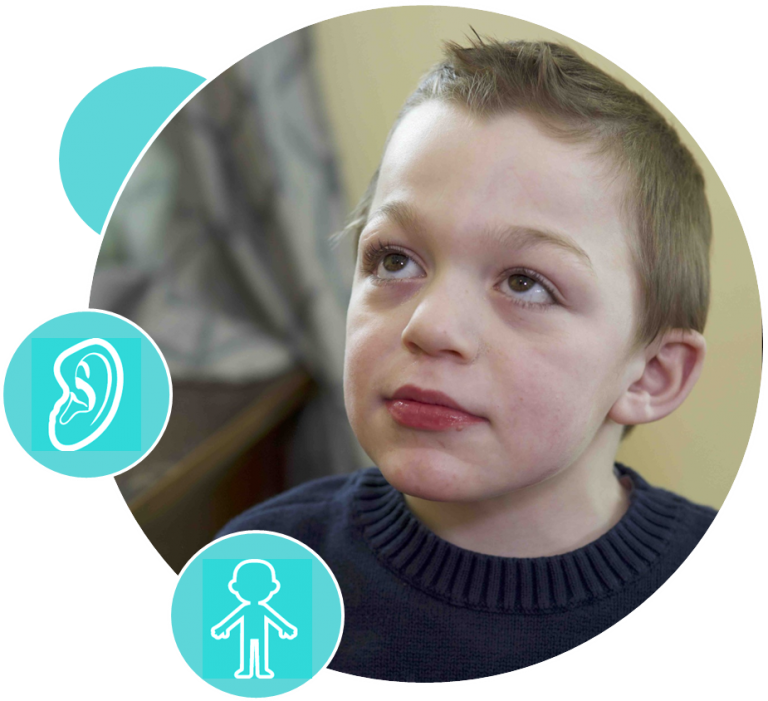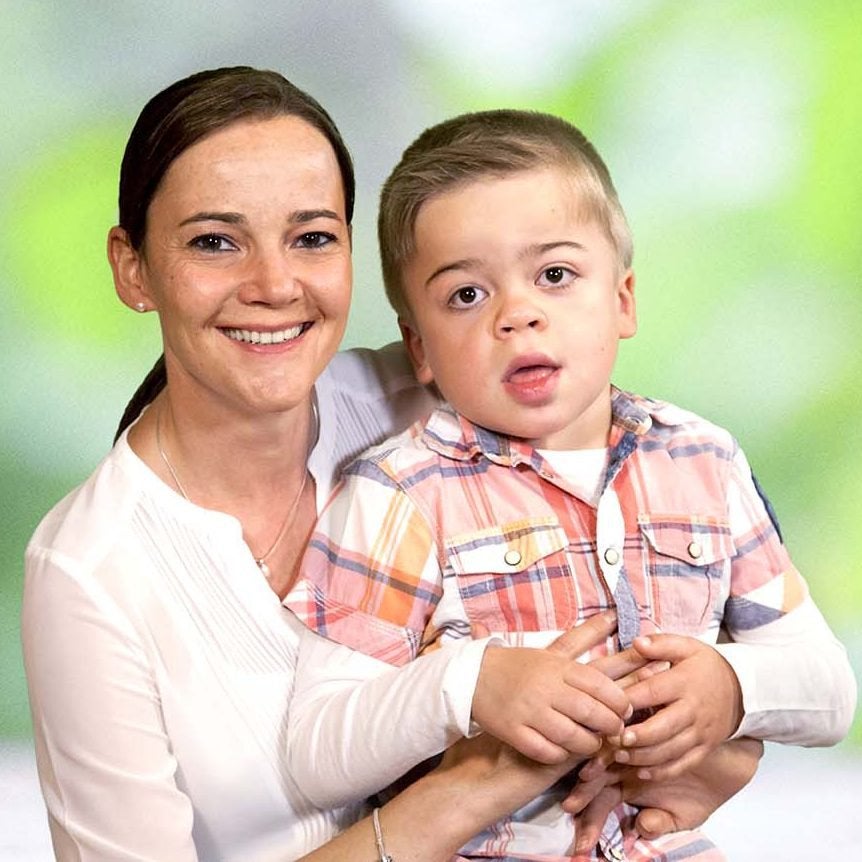Recurrent ear and respiratory infections in children
Could they be a sign of the rare disease known as Hunter syndrome?
Infections are common in early childhood. However, could recurrent ear infections, a runny nose or frequent respiratory infections indicate something more?
Potentially.
They are all common early signs of Hunter syndrome, a rare genetic disease.
What is Hunter syndrome?
Hunter syndrome, also known as mucopolysaccharidosis II (MPS II) is an inherited disease that affects one in every 162,000 newborn babies, the majority of whom are boys.
Hunter syndrome is caused by a lack of the enzyme needed to break down certain complex sugar molecules (known as glycosaminoglycans, or GAGs). As a result, these GAGs build up in cells and disrupt normal functions, leading to a range of symptoms, including the common early symptoms of ear and chest infections. Prompt recognition of Hunter syndrome is essential to start disease management as early as possible.
Respiratory infections: the facts
Hunter syndrome causes many changes to the airways, including: enlarged tongue; tonsils and adenoids leading to smaller airways; a smaller chest cavity with abnormally shaped and stiff ribs; limited mouth opening; and nasal obstruction. Consequently, over 80% of affected children experience chest and lung problems.
How can I tell if my child has a respiratory infection?
Symptoms include a runny nose, sneezing, fever, cough, chest pain and mucus production. Children with pneumonia may also experience confusion, headache, muscle and abdominal pain, nausea, vomiting and diarrhoea.
Why are patients with Hunter syndrome at higher risk of respiratory infections?
Structural changes to the chest combined with abnormally thick secretions due to progressive GAG deposition mean that patients with Hunter syndrome are at a higher risk of respiratory infections. Hunter syndrome patients often experience frequent or recurrent respiratory infections; an average of five respiratory infections per year, compared to three in healthy children. This frequency could be reduced through ensuring a child receives booster vaccinations for bacteria that commonly cause these infections (Streptococcus pneumoniae and Haemophilus influenzae).

When he was about 2 years old, I noticed Aiden had a speech delay, but we thought he would catch up. He had occupational therapy, physiotherapy and speech therapy for a year. Then his paediatrician suggested we see a geneticist because of Aiden’s facial features (broad nose, large head); he wanted to have him evaluated.
- Toni Ann, mother of two sons with Hunter syndrome


Ear infections: the facts
Ear infections are common in healthy children and are often secondary to a respiratory infection or allergic reaction. The primary infection results in swelling and obstruction of the ear structures, leading to a build up of secretions in the middle ear in which bacteria and viral infections can thrive.
How can I tell if my child has an ear infection?
An acute ear infection presents quickly and can be detected by a child experiencing a high temperature, headache, irritability, runny nose, cough, vomiting, diarrhoea and ear pulling. Ear infection with effusion (fluid in the middle ear) occurs spontaneously due to blocked ear tubes or as an inflammatory response after an infection, and may require a doctor to identify.
Why are patients with Hunter syndrome at higher risk of ear infections?
Children with Hunter syndrome are particularly at risk of ear infections due to recurrent respiratory infections, accumulation of GAGs in mucus of the middle ear, and changes in ear structure. As a result, 72% of Hunter syndrome patients experience at least one ear infection, on average first at an age of 23 months, with episodes recurring approximately three times a year.
Many children also experience hearing loss. This can be conductive hearing loss, where sound waves cannot pass through the ear (following chest infections, ear infections or structural ear deformities), sensorineural hearing loss, where there is damage to the inner ear and nerve due to GAG accumulation, or a combination of the conductive and sensorineural causes i.e. mixed hearing loss. Recurrent ear infections can cause conductive hearing loss, with over 50% of Hunter syndrome patients requiring treatment through the insertion of ventilation tubes (tympanostomy) compared to less than 10% of healthy children requiring such surgery.
Other signs: clusters of symptoms
Children with Hunter syndrome present with a variety of signs and symptoms, however, these generally occur as a recognisable ‘cluster’ of childhood illnesses with an average symptom onset of 18 months.
Along with recurrent chest infections, chronic runny nose, frequent ear infections and hearing loss, common symptoms that may occur early in the disease’s course are:
- Facial features such as prominent brow, broad nose and thick lips
- Upper airway restriction, including noisy breathing and snoring
- Umbilical and inguinal hernias
- A distended abdomen (caused by liver or spleen enlargement)
- Joint stiffness, which may lead to restricted movement
- Frequent or long term diarrhoea
- Delays in childhood development (e.g. delayed walking and speech)
- Heart murmur
Who should I speak to if I’m concerned my child might have Hunter syndrome?
It is crucial to remember that many of these signs and symptoms are common in childhood, and it is the combination of them that may indicate Hunter syndrome. If you think your child has two or more symptoms of Hunter syndrome, speak to your doctor.
If you think that your child may be showing two or more of the symptoms of Hunter syndrome, speak to your doctor.
Take a look around the Huntersyndrome.info website to learn more about the causes, signs and symptoms of Hunter syndrome and the support that is available.


